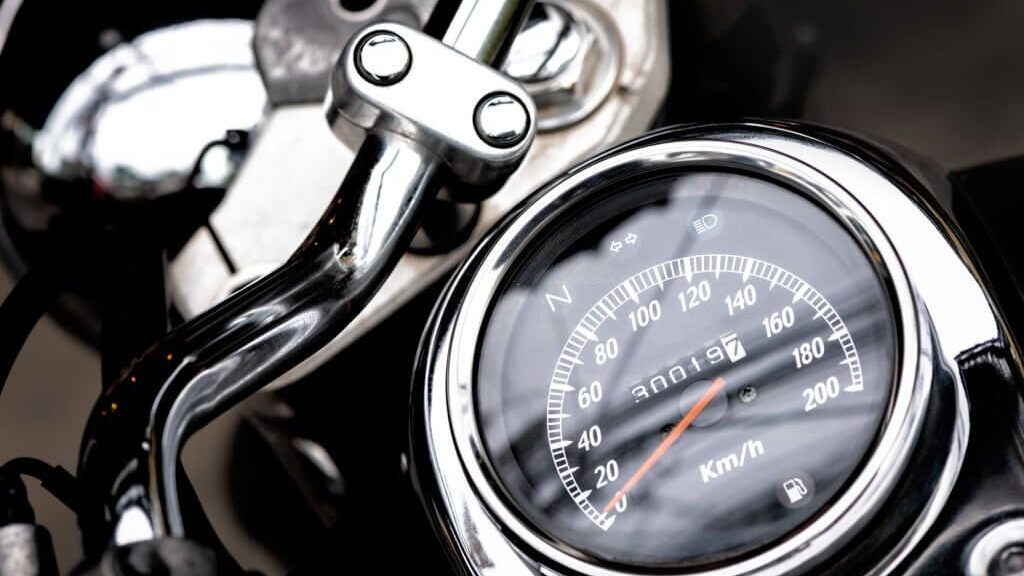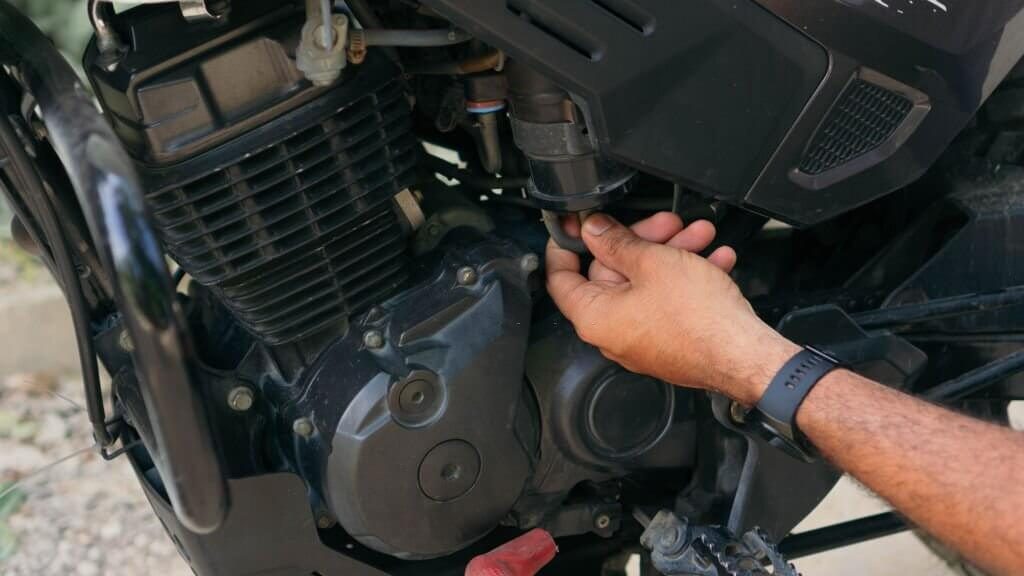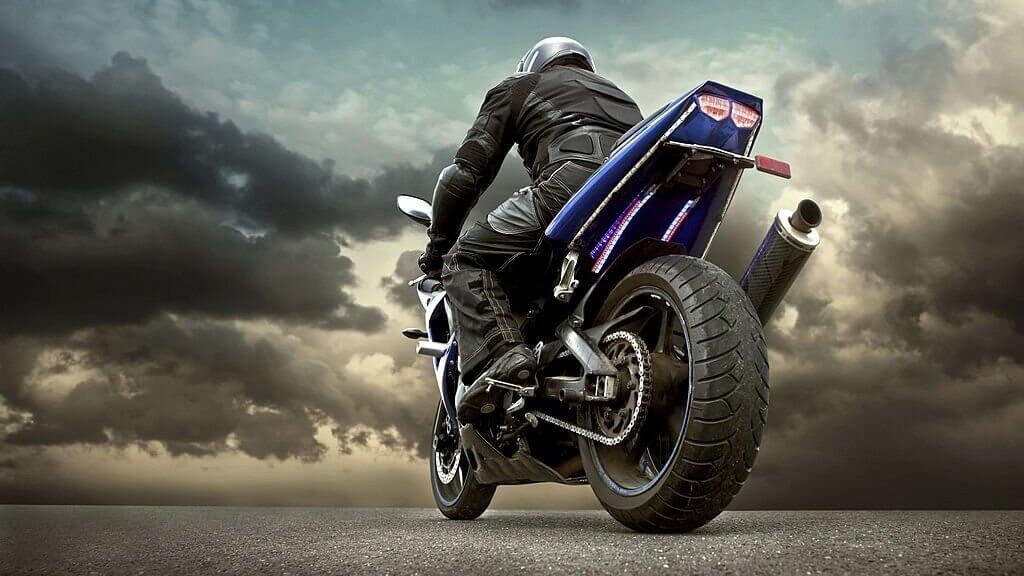As a motorcycle owner, you may wonder what is considered high mileage for a motorcycle. It’s a common concern for riders who want to know when to start budgeting for costly repairs or consider buying a new motorcycle.
According to a recent survey, the average motorcycle owner rides about 3,000 miles annually.
However, what constitutes high mileage can vary depending on the make and model of your motorcycle.
Generally, motorcycles with over 20,000-50,000 miles are considered high mileage. But factors such as maintenance, riding style, and the quality of roads can also affect a motorcycle’s longevity.
In this blog, we will explore what high mileage means for a motorcycle and provide tips on keeping your bike running smoothly for years.
Average Annual Motorcycle Mileage
On average, motorcycles are driven approximately 3,000 miles per year. However, some riders may put more or less mileage on their bike depending on their usage.

Regular maintenance and proper care can also impact the longevity of a motorcycle’s lifespan.
If you are considering purchasing a used motorcycle, you must check the mileage motorcycle and note any signs of wear and tear.
High Motorcycle Mileage Vs. Motorcycle condition
A well-maintained motorcycle can easily exceed 100,000 miles without any significant issues. It’s essential to consider the motorcycle’s condition, wear and tear, and maintenance history when determining its mileage value.
A motorcycle in excellent condition with low wear and tear and a history of regular maintenance can still have a high mileage value.
Ultimately, motorcycle mileage and condition go hand in hand, and both should be considered when evaluating a motorcycle’s worth.
High Mileage For Sport vs. Larger Bikes
Regarding high mileage for motorcycles, the numbers can vary based on the type of bike.

Sport bikes typically have a 20,000 to 30,000 miles lifespan, while larger bikes, such as touring motorcycles, can have a higher mileage range of around 50,000 miles.
However, it’s important to note that the mileage of a motorcycle is highly dependent on factors such as maintenance, riding style, and terrain.
Ultimately, determining what a lot of miles for a motorcycle requires considering these individual factors rather than solely relying on a general mileage range.
How To Use Mileage When Making A Decision
Check Maintenance And Storage Records
To use mileage when making a decision, it’s essential to check the maintenance and storage records of the motorcycle.
A well-maintained motorcycle with higher mileage may be a better investment than a motorcycle with lower mileage but poor maintenance records.
Is Mileage The Only Thing That Matters?
It’s also important to note that mileage is one of many things that matter. The way the motorcycle was ridden, as well as how it was stored, can impact its overall condition and lifespan.
What Do You Mean By “High Mileage?”
Regarding motorcycles, “high mileage” can mean different things to different people. Generally speaking, a motorcycle with high mileage has travelled more than typical.

The typical mileage for a motorcycle depends on various factors, including the make and model, maintenance history, and riding conditions.
Some motorcycles can easily reach 100,000 miles or more with proper care and maintenance, while others may have a shorter lifespan.
How Many Miles Can a Motorcycle Last?
What’s high mileage for a motorcycle? It’s subjective, but proper care can make a motorcycle last a long time.
A motorcycle with high mileage is considered to have 20,000 to 50,000 miles or more. However, many factors can influence this, such as the type of engine, riding style, and climate.
What Really Determines The Lifespan of a Motorcycle?

The truth is mileage alone doesn’t determine a motorcycle’s lifespan. Many factors come into play, so let’s explore them in detail.
1. Routine Maintenance
One of the most critical factors that can affect the lifespan of a motorcycle is routine maintenance.
Knowing how often to change motorcycle oil changes, tire replacements, and other necessary maintenance tasks keep your motorcycle running smoothly and reduce wear and tear on critical components.
Neglecting maintenance tasks can shorten a motorcycle’s lifespan significantly.
2. Breaking-In Period
The break-in period is the first few hundred miles of a motorcycle’s life, during which the engine parts settle into their intended positions.
Following the manufacturer’s guidelines for the break-in period can set the stage for your motorcycle’s long and healthy life.
3. Storage
How you store your motorcycle can significantly impact its lifespan.
Exposure to the elements, such as sun and rain, can cause rust and corrosion while storing a motorcycle improperly can cause damage to the engine and other components.
4. Engine Size & Configuration
The motorcycle’s engine’s size and configuration can also affect its lifespan.

Touring bikes, for example, are often designed with larger, more robust engines than sportbikes.
However, the size and configuration of the engine are just one factor determining a motorcycle’s longevity.
How Often Was It Ridden?
The frequency of use is another factor determining a motorcycle’s lifespan.
Regular use can help keep critical components lubricated and functioning correctly, while extended periods of inactivity can lead to corrosion and other issues.
How Was It Ridden?
Finally, how a motorcycle is ridden can also impact its lifespan.
Aggressive riding, frequent high-speed runs, and other abusive behaviours can stress the engine and other components significantly, leading to premature wear and damage.
How Does Mileage Affect Motorcycle Value?
When buying a used motorcycle, mileage is one of the most significant factors. However, good mileage for used motorcycle cruisers touring can vary depending on the make and model of the bike.
While high mileage may initially seem negative, it doesn’t necessarily mean the motorcycle is in poor condition or has less value.
Other factors, such as maintenance, storage, and riding habits, can affect the motorcycle’s overall condition and value.
Additionally, many riders enjoy adding music on motorcycle rides, which can enhance the overall experience regardless of the mileage.
How to Keep Your High-Mileage Motorcycle Running Like New
Motorcycle mileage life matters when it comes to buying and selling, especially when it counts as high mileage.

With proper care and maintenance, you can keep your high-mileage motorcycle running like new for years to come.
Break It In Like a Pro
The break-in period is critical for the longevity of your motorcycle. Following the recommendations in the service manual can help you break into your bike like a pro.
Typically, the break-in period is the first 500 to 1000 miles of riding, during which you should avoid high speeds or hard acceleration.
Properly breaking in your motorcycle can help extend its life, making it a worthwhile investment.
Follow The Recommendations in The Service Manual
The service manual is a valuable resource that contains detailed information about your motorcycle’s maintenance requirements.
Regularly following the manufacturer’s recommended maintenance schedule can help you avoid costly repairs and extend the life of your bike.
It includes oil changes, air filter replacement, chain adjustment, and brake fluid checks.
Always Check The Air Filter
The air filter is a crucial component of your motorcycle’s engine. A dirty air filter can restrict airflow, reducing performance and potentially causing engine damage.
Checking and replacing the air filter regularly is a simple task that can help keep your engine running smoothly.
A clogged filter can lead to high fuel consumption, affecting your motorcycle’s mileage life.
Use Coolant Instead of Water
Coolant is the way to go when cooling your motorcycle’s engine.
Coolant is designed to withstand extreme temperatures, making it an ideal choice for motorcycles. Using water instead of coolant can cause corrosion and rust, leading to expensive repairs.
Make sure to use the recommended type of coolant for your motorcycle, and keep an eye on the coolant level to prevent overheating.
Inspect The Final Drive Periodically
The final drive is an essential component of your motorcycle’s drivetrain. It transfers power from the transmission to the rear wheel.

If the final drive fails, your bike cannot move.
That’s why it’s crucial to inspect the final drive periodically. Check for leaks, cracks, or any signs of damage. Also, change the final drive oil according to the manufacturer’s recommended schedule.
What’s The Bike’s Service History Like?
One factor that can affect a motorcycle’s mileage is its service history. A well-maintained motorcycle with regular service and maintenance can last longer and perform better than one that needs to be addressed.
This is why it’s essential to check the bike’s service history before purchasing it, especially if it has high mileage.
If a motorcycle has a single owner, it’s usually a good thing as it means the bike has been well taken care of, and the owner understands its maintenance needs.
Additionally, the amount of time a motorcycle has been in use is also a good thing to consider, as a bike that has been used regularly but well-maintained can be in better condition than one that has been sitting idle for a long time.
What is High Mileage for a Harley Davidson
The answer depends on several factors, including the age and condition of the bike, as well as how well it has been maintained.
A manageable number for a Harley Davidson motorcycle is between 40,000 to 50,000 miles. This mileage data point is a useful guideline when purchasing a used motorcycle.
With proper care, Harley Davidson motorcycles can go well beyond this mileage range, but it’s essential to assess each bike individually before purchasing.
How Many Miles Will a Harley 103 Last?
Regarding motorcycle mileage, it’s essential to consider the level of care given to the vehicle.

As for Harley 103, it’s safe to say that it can last between 75,000 and 80,000 miles with proper care and maintenance.
Of course, this is just an estimate and can vary depending on several factors, including the quality of the parts used, the type of riding, and the maintenance schedule.
So, if you want to keep your motorcycle in top condition, take good care of it and follow the recommended maintenance schedule.
How Many Miles on a Harley Davidson Before Rebuild
If you’re a motorcycle enthusiast or own a Harley Davidson, you may wonder how many miles on a Harley Davidson before a rebuild is needed.
Typically, a Harley Davidson can last between 30,000 to 150,000 miles before needing a rebuild.
A single owner caring for their motorcycle can extend its lifespan. Proper owner-level care, such as routine maintenance, regular oil changes, and safe riding habits, can significantly prolong the life of your Harley Davidson.
How Many Miles Will a Honda Shadow 750 Last
As a Honda Shadow 750 rider, you may wonder how many miles you can expect to get out of your bike.
The good news is that the Honda Shadow 750 can last up to 150,000 miles with proper maintenance. Many bike owners have reported reaching this number with no significant issues.
However, remember the number of owners and how well they maintained their motorcycle communication with the bike’s longevity. So, stay on top of your maintenance and enjoy your Shadow 750 for many future miles.
Why is High Mileage Bad
As a rider, knowing what high mileage means for your motorcycle is crucial.

Generally, touring bikes can handle more mileage than other types, but high mileage is typically considered anything over 50,000 miles.
While it’s not necessarily “bad,” high mileage can indicate a lot of wear and tear on the engine and other components.
It’s especially concerning if the bike has been stored for long periods, which can cause rust and other issues. High mileage can also affect resale value, as buyers may be wary of purchasing a bike with many miles.
Ultimately, regular maintenance and careful storage can prolong the lifespan of your motorcycle, whether you’re keeping it for the long haul or planning to sell.
Harley Davidson Gas Mileage
Harley Davidson’s gas mileage ranges between 38-65 MPG (combined), with an average of 44 MPG.
This varies depending on your Harley type, as cruisers and touring bikes typically have lower gas mileage. When selling your motorcycle, potential buyers may consider the mileage, overall condition, and maintenance.
As a Harley Davidson owner, it’s important to prioritise proper maintenance to keep your bike running smoothly and efficiently.
High Mileage For a Motorcycle FAQs
20,000 miles is not considered a lot for a motorcycle. With proper maintenance, motorcycles can easily surpass this mileage.
For a cruiser motorcycle, high mileage is typically considered to be around 50,000 miles or more.
30,000 miles is not considered a lot for a motorcycle. Properly maintained motorcycles can easily reach this mileage and beyond.
High mileage is not necessarily bad if the motorcycle has been properly maintained. It’s important to consider the maintenance history and overall condition of the bike.
Mileage can be considered high depending on the type of motorcycle. For sportbikes, 20,000 miles may be considered high, while for cruisers, it may be closer to 50,000 miles or more.
The average mpg for a motorcycle can vary greatly depending on factors like engine size, riding style, and terrain. Generally, a motorcycle can get 55 mpg.
Low miles for a motorcycle can vary depending on the type of bike, but generally, anything under 10,000 miles can be considered low.
Anything under 20,000 miles can be considered decent mileage for a used motorcycle.
Wrapping Up!
Understanding what high mileage means for a motorcycle is crucial for any rider.
While the number of miles a motorcycle can handle varies depending on several factors, such as the engine type and maintenance routine, it’s generally agreed that any motorcycle with over 50,000 miles is considered high mileage.
However, with proper care and regular maintenance, a motorcycle can easily surpass this number and continue providing reliable performance for years.
What is the highest mileage you’ve ever seen on a motorcycle, and how did it perform? Let us know in the comments!


Comments are closed.